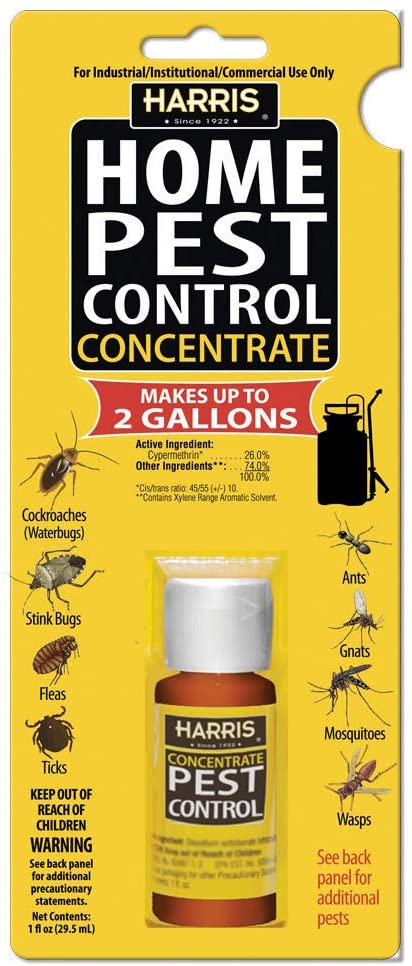Bed Pest Therapy Failure: Contrasting Chemical Vs. Non-Chemical Solutions
In the realm of parasite control, particularly when managing the relentless concern of bed insects, the choice between chemical and non-chemical therapy solutions can be a pivotal one. Both strategies offer distinct advantages and downsides, affecting variables such as performance, safety considerations, and overall cost. By taking a look at the nuanced information of each approach, a clearer understanding of which path to go after in dealing with a bed pest problem can be acquired.
Effectiveness of Chemical Treatments
Chemical treatments for bed pest invasions have actually been widely recognized for their quick and potent effectiveness in removing these insects. When considering the effectiveness of chemical treatments, it is essential to recognize that they can give a fast and comprehensive option to a bed insect issue.
Moreover, chemical therapies have the benefit of using recurring impacts, suggesting that they can proceed to eliminate bed insects also after the preliminary application. This residual action is particularly beneficial in combating any type of potential re-infestations. Furthermore, the rapid action of chemical treatments can bring relief to people facing extreme bed bug problems, enabling them to regain control of their space rapidly.
Safety Interest In Chemical Solutions
One crucial facet that needs cautious factor to consider when using chemical options for bed bug treatment is ensuring the safety and security of passengers and the environment. Direct exposure to specific chemicals used in bed insect treatments can lead to respiratory system concerns, skin irritation, or various other unfavorable responses, particularly in people with pre-existing conditions or level of sensitivities.
Furthermore, the ecological influence of chemical solutions is an additional significant consideration. Some chemicals used in bed pest treatments might be hazardous to valuable insects, wildlife, and communities if they seep right into the soil or water supply. It is vital to utilize chemical therapies deliberately, complying with security standards, and considering less hazardous alternatives to alleviate these risks and make certain the risk-free and reliable administration of bed insect infestations.
Advantages of Non-Chemical Techniques
Considering the potential safety issues and environmental effect associated with chemical solutions for bed bug therapy, discovering non-chemical strategies provides an appealing option with several unique advantages. Non-chemical therapies are ecologically pleasant, as they do not add to air or water contamination, making them a lasting choice for insect control.
Furthermore, non-chemical options can be effective in targeting bed pests, including hard-to-reach locations where chemical therapies might not permeate - A1 exterminator charlotte nc. Approaches such as warmth therapy, vacuuming, vapor cleansing, and cushion coverings offer detailed removal without the use of dangerous chemicals.
Limitations of Non-Chemical Treatments

Furthermore, non-chemical treatments frequently need numerous applications to attain effective obliteration. This can be taxing and may not constantly ensure full removal of all bed pests and their eggs, specifically in hard-to-reach or surprise locations.
Furthermore, the success of non-chemical therapies greatly depends on correct execution and thoroughness, which can be challenging for people without expert competence. Insufficient application of non-chemical approaches might cause incomplete removal, causing relentless infestations and the need for added treatments.
Therefore, while non-chemical treatments have their advantages, it is important to recognize these constraints and consider them when identifying the most effective technique for taking care of bed insect invasions.
Expense Contrast: Chemical Vs. Non-Chemical Options
Offered the restrictions linked with non-chemical therapies, a crucial aspect to review in the context of bed pest management is the expense comparison between chemical and non-chemical alternatives. Chemical therapies normally entail pest control materials the application of pesticides by specialists, which can vary from $250 to $900 per area, relying on the extent of the problem and the dimension of the location to be dealt with. On the other hand, non-chemical treatments like heat treatment or steam can be much more costly, with prices ranging from $1,000 to $6,000 for an entire home. While the first expense of chemical therapies might appear lower, numerous treatments may be called for to completely eliminate the problem, possibly increasing the general expense. On the other hand, non-chemical choices might provide a much more lasting and environmentally friendly service, although they can be cost-prohibitive for some people. Ultimately, when considering the cost of bed pest treatment choices, it is essential to weigh the upfront expenses against the effectiveness and lasting sustainability of the picked technique.
Verdict

Considering the potential safety issues and ecological he said influence connected with chemical options for bed pest treatment, checking out non-chemical techniques provides an encouraging choice with numerous distinct advantages.Provided the constraints connected with non-chemical treatments, a crucial facet to review in the context of bed bug administration is the cost contrast between chemical and non-chemical options. In contrast, non-chemical treatments like warm treatment or heavy steam can be extra pricey, with expenses ranging from $1,000 to $6,000 for an entire home. While the initial cost of chemical treatments may seem lower, several treatments may be called for to totally eradicate the invasion, potentially increasing the overall expense.In conclusion, when comparing chemical and non-chemical bed pest treatment options, it is essential to think about efficiency, security, advantages, constraints, and price.